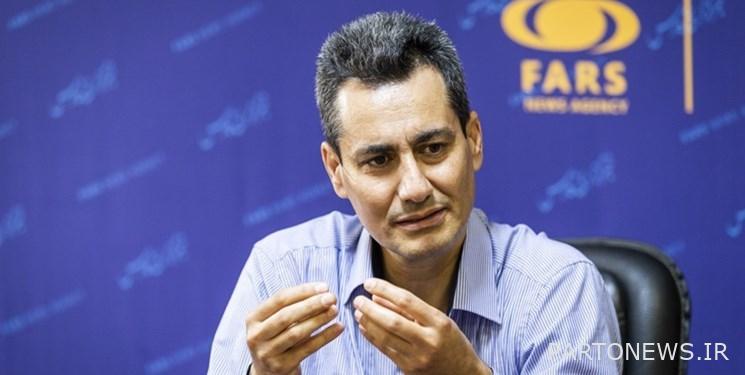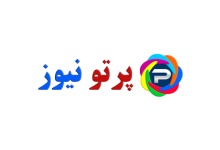People’s diet does not match water resources / Solving the problem of drought by wastewater treatment

According to the economic correspondent of Fars News Agency, in the ranking of the World Resources Institute (WRI), Iran is in the fourth place in the world water stress. The increase in water stress in the summer of 1400 was very predictable due to the decrease in rainfall in the current water year, and about 200 cities in Iran faced this problem of water stress.
For example, withdrawals from dams around the capital are currently being followed by pumping, and the amount of water reserves in Khuzestan province is three times the need of only one agricultural sector. Such examples indicate the formation of a widespread water crisis in the country, and officials and those in charge should provide the basis for improving the situation by citing solutions.
If the country’s water management models are used as before, there is no water left to cover mismanagement, and any wrongdoing in the current situation can lead to irreparable damage.
In this regard, in order to investigate the reasons for its formation and ways to overcome the current situation, we went to Pejman Teymouri, an expert in the field of energy, to talk to him about this issue.
The details of this conversation are as follows:
* The imbalance of water resources and consumption of the country is currently 7 billion cubic meters
Fars: As a start to the discussion, I would like to ask if there are accurate figures on the amount of water consumption in the country along with renewable water sources, in other words, how is the current water balance statistic changing?
Timurid: The water crisis in Iran is entering a new pattern, the effects of which are evident in the daily lives of millions of Iranians. Today, the average annual water consumption in Iran is about 96 billion cubic meters, a figure that is about 8% higher than the total renewable water resources in Iran (89 billion cubic meters) and in other words about 80% more than the country’s water shortage threshold (53 billion cubic meters) to It counts.
Fars: What exactly are the examples of these obvious works that you are talking about? Are there any signs of drought in people’s lives and consumption patterns?
Timurid: Over the past decades, due to high water consumption, the consumption of this vital fluid in Iran has consistently exceeded about 4 times the initial water stress threshold, ie about one quarter of the total renewable water.
As a result of this huge gap between demand and sustainable water resources, Iran is moving towards an environmental-social crisis that has a decisive impact on the health of current and future generations. In addition, the obvious signs of Iran’s water crisis are shrinking in shrinking lakes and drying rivers, uncontrolled aquifers, declining water levels in the country, increasing conflicts and inter-regional conflicts as well as different parts of the country.
* Water consumption must be lawful and subject to laws and regulations
Fars: Basically, can a solution be found to improve the current situation and can the ground be improved?
Timurids: The longer the current situation continues, the more degraded the environment will be and at the same time the possibility of restoring the environment to its natural conditions becomes less and less. The basic and fundamental solution to manage the water problem in Iran is clear, water consumption must be regulated and subject to laws and regulations and be reduced.
Water efficiency must be increased and the water used must be treated and used in the system. However, managing the economic and social costs associated with these potential solutions and principles is not a small commitment.
In each water year, the available water is distributed among the four main consumers: urban sector, industry, agriculture, and the environment. Demand for water varies considerably in terms of quality, quantity and minimum prices, ie the willingness to pay the lowest unit price of water.
Considering the vital role of water in people’s daily lives and health, it is generally accepted that the minimum value of water for direct consumption of people (urban water) is the highest among these sectors. In addition, considering the minimum profits or margins of water for industrial uses compared to the agricultural sector, industries have a significantly higher priority for water utilization, which creates competition between the agricultural sector and industry.

* Structural measures have replaced water efficiency and have become a problem instead of a solution
Fars: To what extent have the solutions pursued so far, such as activities to maintain more surface water with a focus on structural activities, improved the situation?
Timurid: To date, government-implemented solutions to balance water supply and demand have avoided almost any direct government intervention, which has reduced government participation. Instead, efforts have been made to compensate for the rupture by increasing supply (building more dams, exploiting more groundwater) and, to a lesser extent, increasing incentives for new irrigation techniques to increase water productivity. However, building more dams to control surface water as much as possible and exploiting groundwater as much as possible was once part of the problem, not part of the solution.
Fars: Can you explain the fact that structural measures are now part of the problem?
TimuridsYou see, when you look at the problem of water without proper efficiency, the only solution is to compensate for the disconnection of resources and consumption by providing more water. In this view, the dam can be a solution to increase water resources, but this issue causes us to see an increase in water consumption to the extent and perhaps more than it is added to the country’s water resources, and therefore, productivity is practically neglected. That is why I believe that water resources management structures are now part of the problem and not a solid solution to the problem and move towards water efficiency.
* People’s diet does not match the country’s water resources
Fars: We all know that the agricultural basin is one of the largest sources of water consumption in the country. To what extent do you think this issue is considered to affect the country’s water resources?
TimuridsYou see, the pattern of cultivation is not a matter of order, and when you actually resort to an order, you have practically reduced your ability to manage. That is, as long as the food pattern increases the demand for a crop, the farmer has a good market and cultivates that crop.
Fars: So you are interested in the fact that the wrong diet is a threat to the country’s water resources?
Timurid: You see, the diet of the people, which is a function of the growth of their annual income, strongly affects the country’s water resources. Food consumption patterns in Iran are not correct at all. We all know that rice cultivation requires a lot of water. Every Iranian consumes 50 kg of rice and 56 kg of potatoes annually. Suppose every Iranian changes his diet and increases the amount of rice in his food basket to 25 kg and consumes potatoes instead.
One kilogram of rice has 2347 kcal, while one kilogram of potatoes has 753 kcal of energy, which indicates that to replace one kilogram of rice, 3 kilograms of potatoes must be added to the food basket. However, water consumption per kilogram of potatoes is about 85% less than the same amount of rice.
If this diet change occurs, Iranians will not only pay less to buy rice, but will save 1.1 billion cubic meters of water, which will be enough to quench the thirst of 14 million people a year.

* If the use of treated effluent was on the agenda, drought would have no effect on water resources
Fars: The statistics that you provide are very shocking. Is there a history of the cultivation pattern in the country?
Timurid: According to the long-term average, wheat with a consumption of 200 kg per person per year has consistently dominated the Iranian food basket, while potatoes with a consumption of 60 kg per person per year and rice with a consumption of 50 kg per person People are the other two main and important sources of carbohydrates per year.
Tomatoes with a per capita consumption of 67 kg have the highest share of vegetables in the food basket. Every Iranian consumes an average of 20 kg of oil and 29 kg of sugar annually. Among the products that are mainly used for oil extraction as well as for livestock and poultry feed are corn and soybeans, which have seen a significant increase in demand for them over the past 15 years. The total weight and value of food consumed by Iranians in 2016 are equivalent to 16 million tons and 37 billion dollars, respectively. Accordingly, the expected growth trends of the population, we predict that the total value of food demand, if the value of the dollar remains stable, will reach $ 46 billion in 1404.
Fars: In your remarks, the issue of paying attention to wastewater as a usable water source was mentioned. How much capacity of using treated wastewater should be on the country’s agenda?
TimuridsRecently, the total annual water consumption in Iran is estimated at 96 billion cubic meters, which is about 8% more than the total amount of renewable water resources in the country, while to effectively reduce water crises, the total fresh water consumption should not symbolically exceed 60% of the total resources. Violation of renewable water. This means that the total consumption of fresh water in the country should be reduced to 4.53 billion cubic meters.
In the three decades in the period 1389-1389, ie in a period of 30 years, we have produced 2.1 billion cubic meters of sewage and effluent annually, which is equivalent to 36 billion cubic meters. On the other hand, in the same 30 years, we have reduced rainfall by about 36 billion cubic meters, which is equivalent to 2.1 billion cubic meters per year. If the same amount of wastewater were completely treated and reused, we could make up for the total reduction in rainfall in these 30 years. Of course, I do not have an exact figure for the actual amount of treated effluents in these 30 and I do not know if this amount of effluent is really completely treated or not.
* Solving Iran’s water problem depends on increasing productivity
Fars: One of the other sources that is highly regarded by the public is the use of desalination of seawater and the transfer of this water to land. Do you consider this solution correct for managing resources in the country?
Timurid: Due to high capital costs, high energy consumption and significant environmental impacts, desalination means the use of seawater for purposes other than urban water supply as one of the solutions to the Iranian water crisis is relatively unlikely.
Therefore, the problem of water shortage in Iran must be achieved by combining water efficiency, for example, modern irrigation, the selective termination of some activities that consume a lot of water, and increasing the use of recycled water.
Fars: What is your suggestion for water policymakers to improve the situation in the country in terms of water resources?
Timurid: In order for policymakers to make wise and informed decisions, experts must provide a modern water governance structure for Iran that details the location and time of water availability at various scales, as well as maximum permissible consumption and equitable, economical and sustainable distribution among stakeholders. Include different.
What is very important is to determine the patterns of the product area that are optimized for water consumption, suitable weather conditions and its economic viability.
Therefore, experts should devote their efforts to research and development of activities that produce tangible outputs and results. In addition, they must clearly and honestly convey the facts of the matter to policymakers and the people in order to help develop programs and deal with the difficult crisis that the country is facing.
In addition, considering that the trustee of this field in the Ministry of Energy has not been determined yet, in the opinion of an individual, in addition to accurately identifying the country’s water issues, he should have precise solutions to solve these problems, because even time to reach a solution Does not exist in this area.
Interview by: Mohammad Enayati Najafabadi
End of message / b
.

